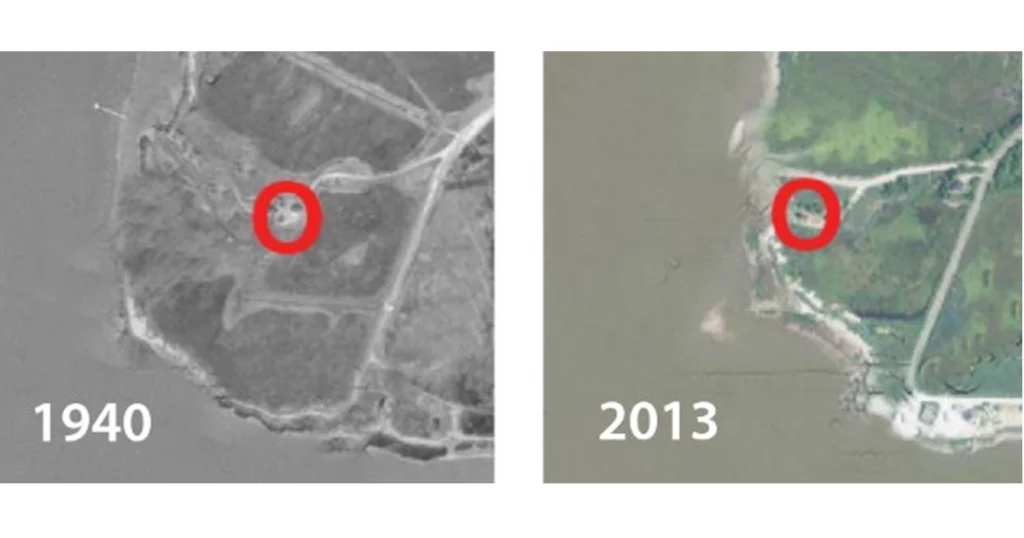
Photo courtesy of Wiki Commons CC BY-SA 4.0, Link

ARTICLE
Geotube Shoreline Protection for Historic New Jersey Lighthouse
Over the past several decades, the shoreline around the East Point Lighthouse has receded continually, posing a major threat to the more-than-170-year-old landmark. Despite the creation of a dune system designed to protect against erosion and rising sea levels, the ocean is nearly at the building’s doorstep. In March of 2018, a severe storm severely compromised the dune system forcing municipal work crews to hastily pile sandbags along the shoreline in front of the lighthouse.

Shoreline around the East Point Lighthouse receding from 1940 to 2013.
But a better solution with more longevity was needed. Later that year, the New Jersey Department of Environmental Protection began a project to install 600 feet of Solmax Geotube® to reduce the risk of further erosion and help restore a natural, living shoreline.
Eight Geotube containers were laid end to end to cover the distance. Each was filled with sand and set on top of a scour apron held in place with anchor tubes. The scour apron is a critical part of the system, extending several feet beyond the Geotube to prevent wave action from compromising the shoreline under the structure. The lee side of the structure is further protected with Solmax sand filled mattresses, which are designed to remain exposed, endure abrasion and UV light, and also trap and hold soil on the surface to help establish a covering layer of vegetation.

Unlike conventional sandbags, a Geotube container is massive. In this case, a sand-filled Geotube is five feet high, 10 feet wide and weighs more than 3,000 pounds. Once the Geotube is set in place, it’s virtually immovable and can withstand waves, wind, abrasion and impact.

The new Geotube shoreline system was covered with sand to help create a coastal dune habitat, protect the inland wetlands from erosion and prevent the ocean from advancing further towards the historic lighthouse.






